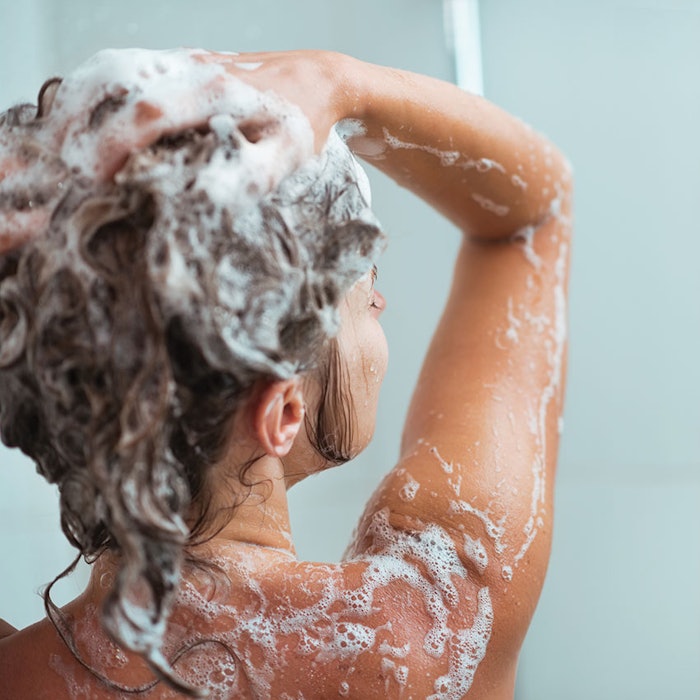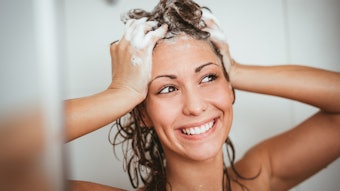
Editor's note: For some time, the following article from Tony O’Lenick and David Zhang, Ph.D., has drawn frequent reader interaction. Considering its overwhelming popularity and relevance to this month’s magazine topic, i.e. bath/shower, it seemed appropriate to highlight, for your consideration.
Shampoo and body wash/shower gels are two major classes of personal care cleansing products. Most commercial shampoos and body washes are made as cream emulsions or gels and a detergent base with added functional ingredients. Due to their similarities, many people use one as the other. And although they have similar components, there are also many differences, from the view of a personal care formulator.
On Target
The first difference is their target. While hair is actually a modified type of skin, the skin is a living organ that replaces its outermost layer on a frequent basis. In contrast, hair is basically a dead material derived from a few live cells deep within the skin’s surface.
Shampoo Formulating
Hair care is typically more complicated than body care, due in part to its manifestation of human diversity. For example, there are three basic ethnic hair groups: Caucasian, Asian and Black-Afro/Caribbean. Such hair types vary from completely straight to tight, wiry curls; and from fine and flyaway, to coarse and frizzy, with widely differing behaviors.
Shampoos were created because hair became rough and damaged when cleansed with soap. These products typically contain added conditioning ingredients and if used as body washes, shampoos can impart a slimy feel on skin.
Shampoo should demonstrate properties including: proper detergency without degreasing; the ability to form delicate and rich bubbling; easy rinsing; a good finish after washing hair; minimal skin/eye irritation; no damage to hair; low toxicity; and good biodegradability. Shampoos are also made for specific hair conditions such as dryness, oiliness, damage from color treatment, frizziness, etc. Each of these benefits employs different ingredients designed for application to hair, not skin.
The purpose of a shampoo is to clean but not overly clean the hair; otherwise all of its protective oils would be stripped. Shampoos must also smell nice, look good, feel thick or creamy and produce a rich lather. Other selling points might be trendy herbal extracts or nutritional additives such as amino acids from silk or milk, vitamins, etc.1
Shampoos also differ in that they have a pH of between 4 and 6. Acidic shampoos are the most common type as they do not contain soap and they come closer to the natural pH of hair. Due to this mildly acidic pH, these shampoos do not swell the hair shaft or strip natural oils. The scales on hair follicles lay flat, making the hair feel smooth and look shiny.
Hair care is typically more complicated than body care, due in part to its manifestation of human diversity.
Citric acid is often used to adjust the pH down to 5.5, as it is a fairly weak acid, which makes the adjustment easier. It also has a small amount of preservative action.
Even though most modern shampoos include a conditioning component, shampooing is frequently followed by the use of conditioners, which eases combing and styling.1 Conditioners also smooth down the cuticle layer of hair, which can become roughened during the physical process of shampooing. They can mitigate hair damage by improving sheen, decreasing brittleness, decreasing porosity and increasing strength.2
More recently, consumers expressed a need for cleaning and conditioning in one step. Therefore, two-in-one shampoos were created with conditioning materials to offset the harsh effects of the surfactants on hair. Other specialized formulas include anti-dandruff, natural, baby and animal shampoos, which utilize specifically adapted ingredients. Anti-dandruff shampoo, for example, contains fungicides such as ketoconazole, zinc pyrithione and selenium sulfide, which reduce loose dander by killing Malassezia furfur.1
Body Wash Formulating
Body wash, on the other hand, is an emulsion/gel of water and detergent base with added functional ingredients such as moisturizer/conditioner, pearlescent pigments, colorants, fragrance, etc. It is used as a skin cleansing agent in the shower or bath.
Body wash contains milder surfactant bases than shampoos. In addition to being pH-friendly to skin, i.e., pH 5–6.5, most body washes contain skin conditioning agents. Body wash must provide proper detergency without degreasing skin. It normally imparts a rich foam, provides easy rinsing, induces minimal skin irritation and has good biodegradability. Finally, almost all commercial body washes have a pleasing scents.











